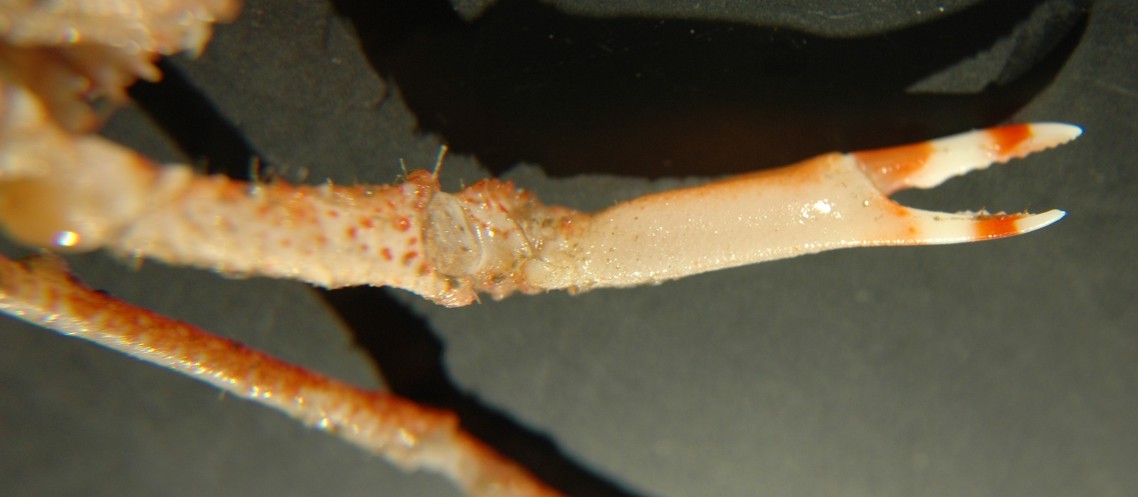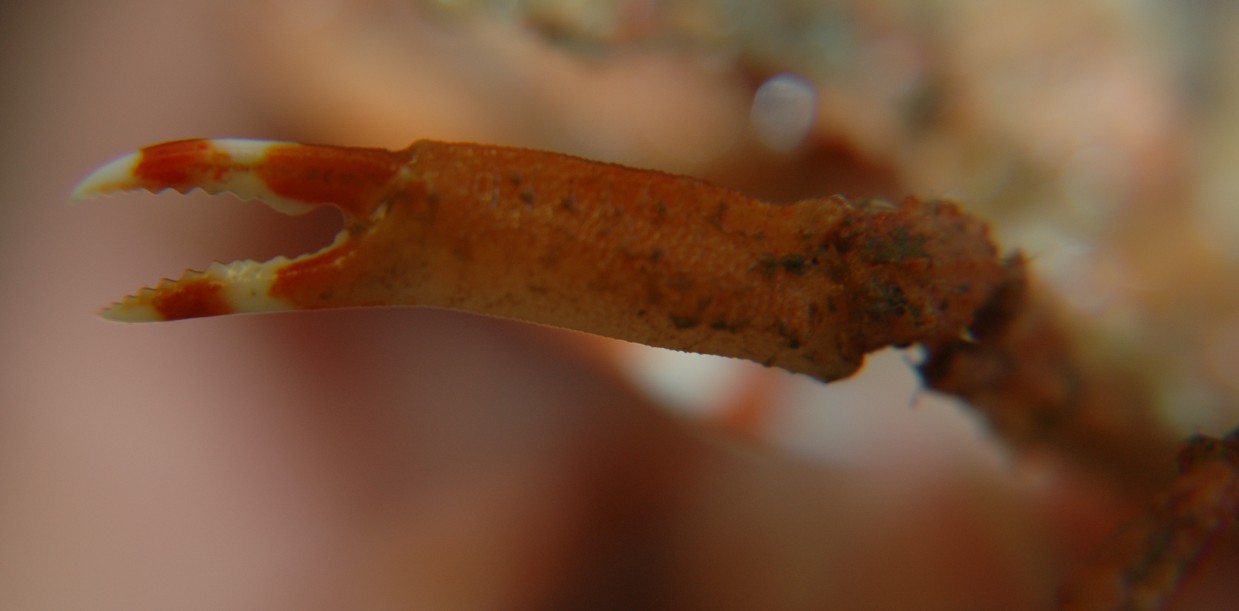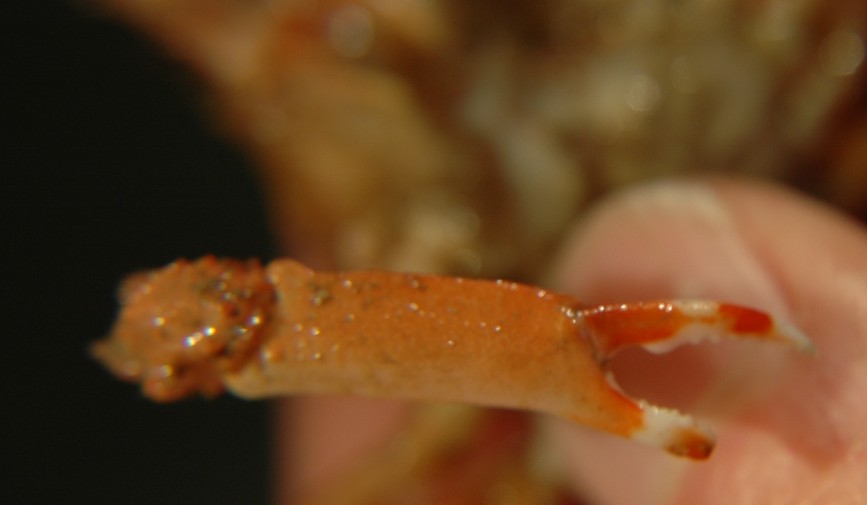How to Distinguish from Similar Species:Oregonia gracilis has rostral spines which are nearly parallel at least proximally, it has a prominent spine projecting laterally behind each eye (photo), and it does not have spines on the dorsal carapace.
Geographical Range: Kodiak, Alaska to Cortez Bank, Mexico; Japan.
Depth Range: subtidal, 9-1190 m
Habitat: Rocks and boulders, gravel, shelly, and muddy bottoms.
Biology/Natural
History:
This species
often decorates. The individual above has several sponges on
it.
| Return to: | |||
| Main Page | Alphabetic Index | Systematic Index | Glossary |
References:
Dichotomous Keys:Coffin, 1952
Hart, 1982
Kozloff 1987, 1996
Wicksten, 2009
General References:
Jensen,
1995
Scientific Articles:
Berke, Sarah K. and Sarah A.
Woodin,
2009.
Behavioral and morphological aspects of decorating in Oregonia
gracilis
(Brachyura Majoidea). Invertebrate Biology 128:2 pp 172-181
Web sites:
General Notes and Observations: Locations, abundances, unusual behaviors:
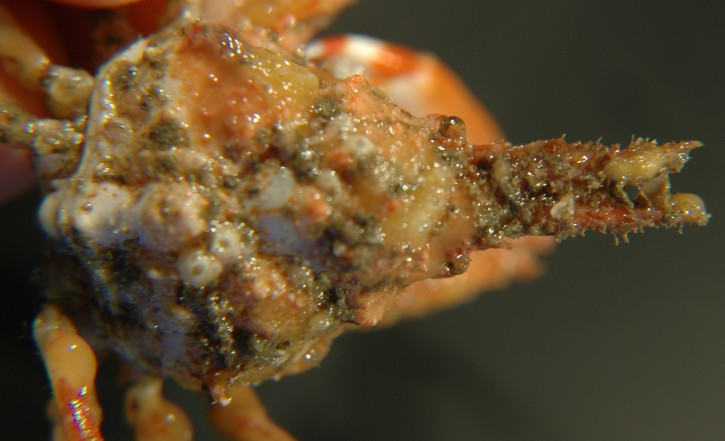
Though there are many bumps and small spines on this species' carapace,
it does not have the prominent, laterally-directed spines behind the
eyes
that Oregonia
gracilis has.
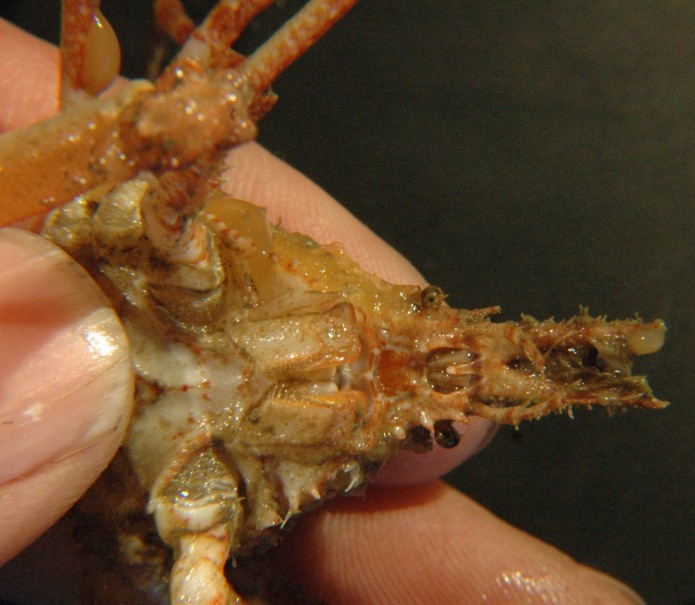
The long spines which make up the rostrum can be clearly seen from
below
Authors and Editors of Page:
Dave Cowles (2007): Created original page
CSS coding for page developed by Jonathan Cowles (2007)

